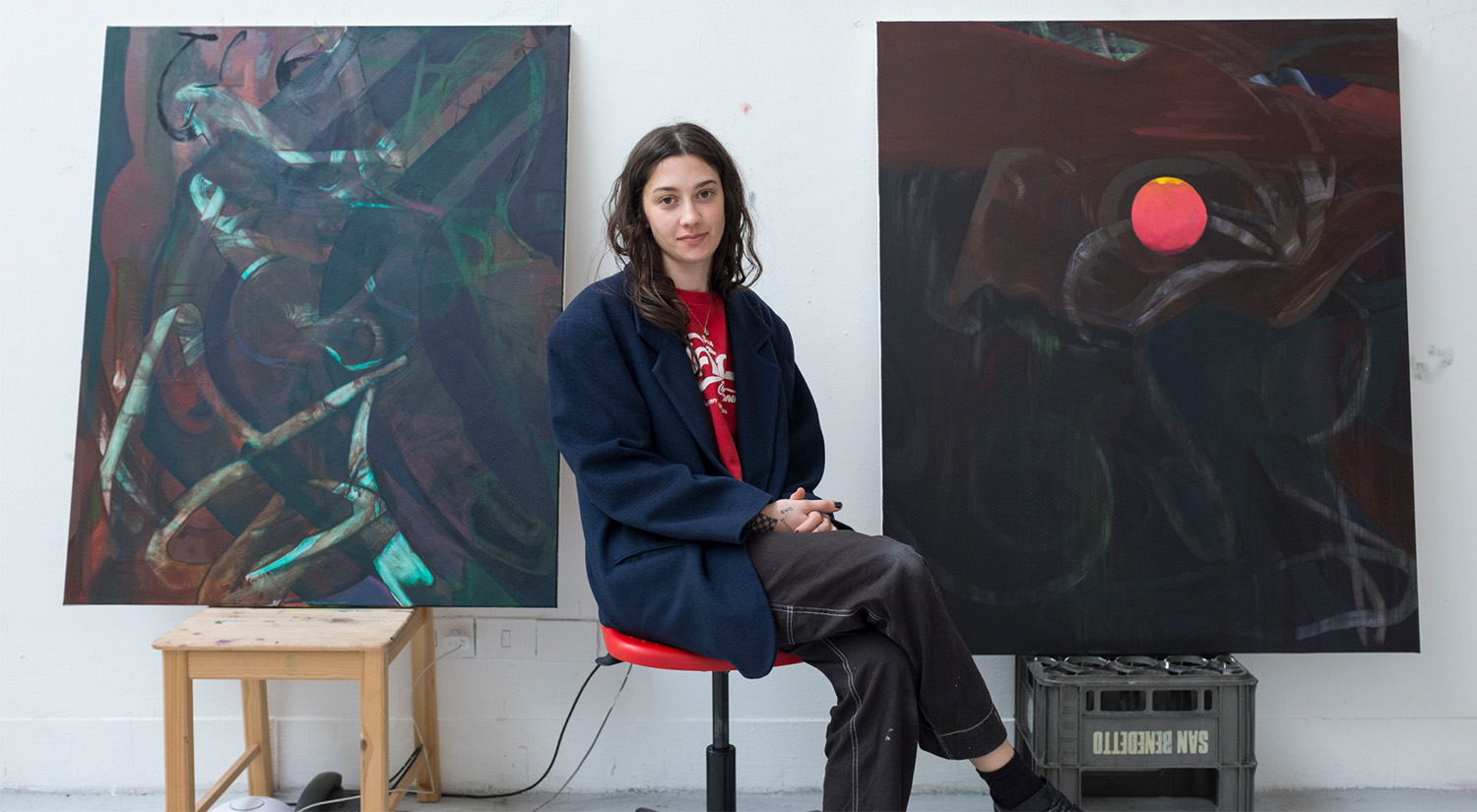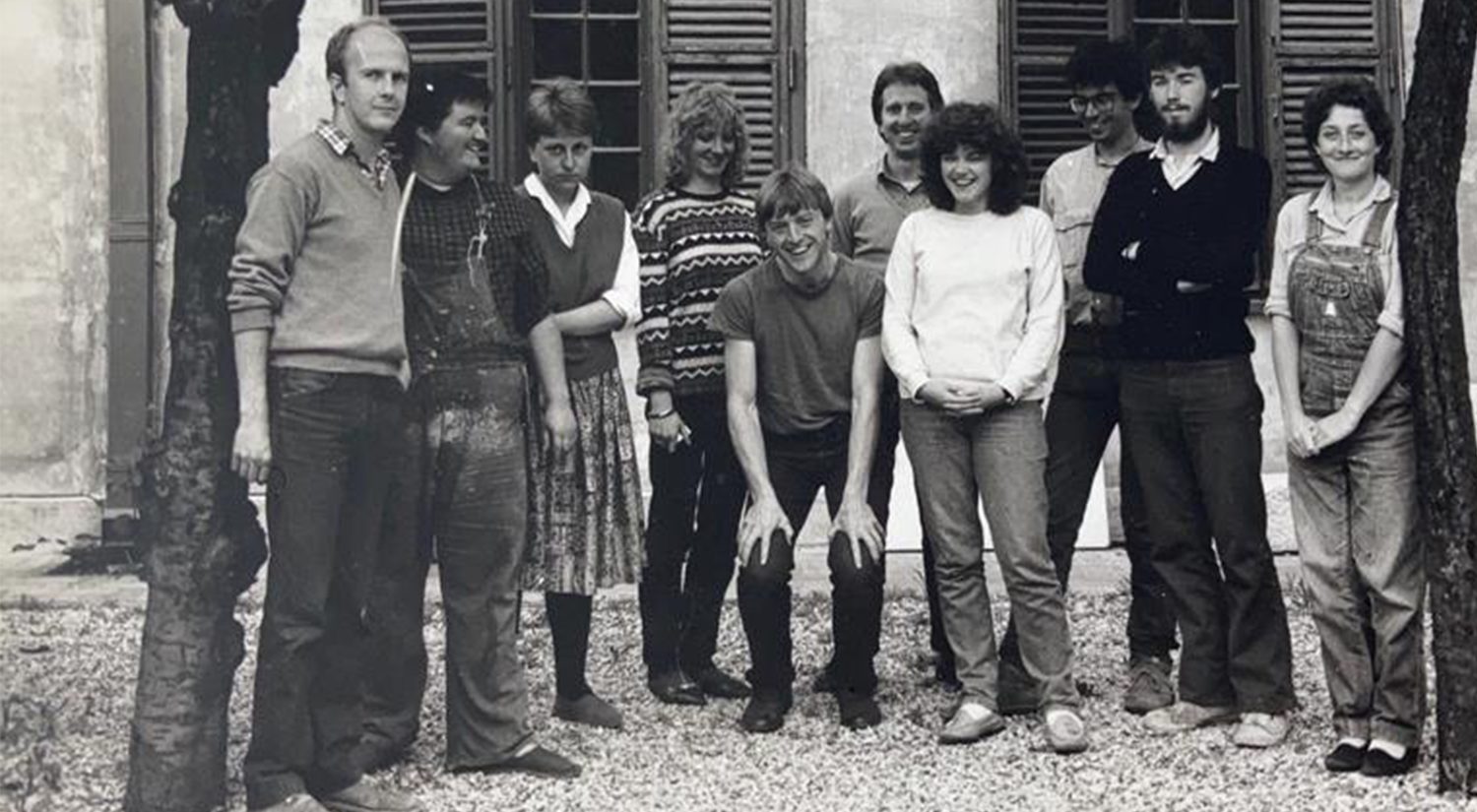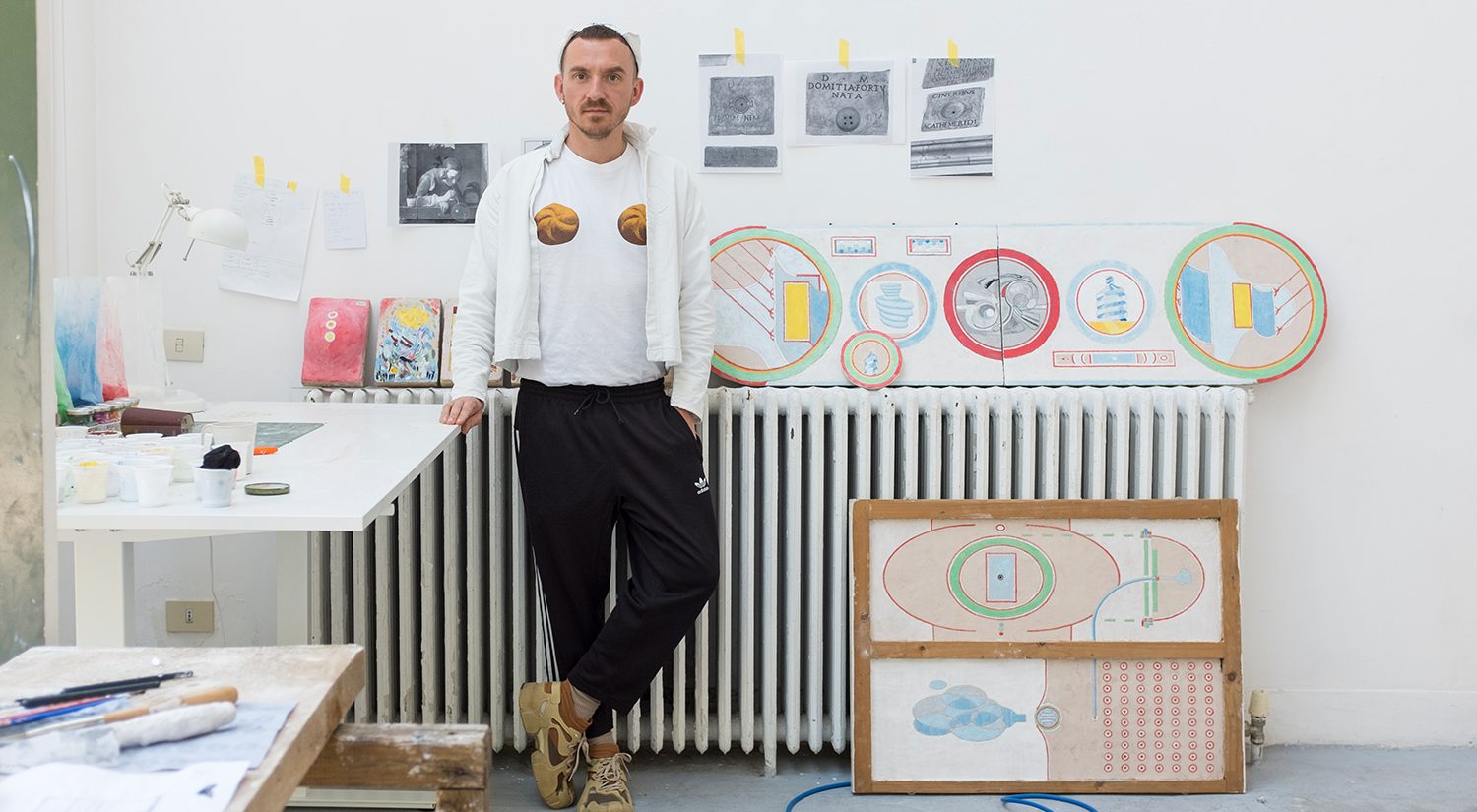An interview with Lucy Tarquinio, winner of the Abbey Scholar in Painting, in which she speaks about the work she has produced during her residency at the BSR from January – March 2023, ahead of the Winter Open Studios.
What’s the use of the line in your paintings?
A few years ago I was making paintings that were gestural, thinly layered, and almost totally abstract. At this time I was using very literal and flat language and text as reference to better explore process and abstraction. The line at this point existed solely as a method to build convoluted space with expressive brushstroke and color. What I found most successful about these paintings was how I was able to skew the legibility of the written text and letters with properties innate to oil painting, so my interests shifted away from the meaning of the words as statements or proclamations. I also realized that I wasn’t totally tied to the stylistic choices of highly expressive or gestural painting, and began to look further outside of myself and my intuition. I began using references from life within the abstraction to more effectively confuse space and emotional reception. So, linework became a way for me to play with legibility and trickery because it helped bridge this spatial gap. I continue to use found language as one of many points of reference, but the line has prevailed as its own protagonist. It helps to contextualize the duality of abstract and represented space, as layers of paint get added and removed and eventually built up to a final image, the line almost always prevails as an indispensable and yet, tangled form.
In the paintings I’ve been making at the BSR, the line manifests itself somewhat uniquely in each one: it’s an abstract gesture, a curlicue, a slash into an image, a cartoonish outline, and a question posed to onlookers. I think of the line as the thing which guides all other formal qualities, and can be the meeting point between intuitive and logical decision making. It gives color, shape, and value a direction that, hopefully, is understood innately and caringly by viewers. In its most successful rendering, the line tricks, teases, and beckons the viewer towards the image. Surpassing the initial intrigue, I hope that the line is able to guide our eye around the painting and continuously engage us in an exciting way.
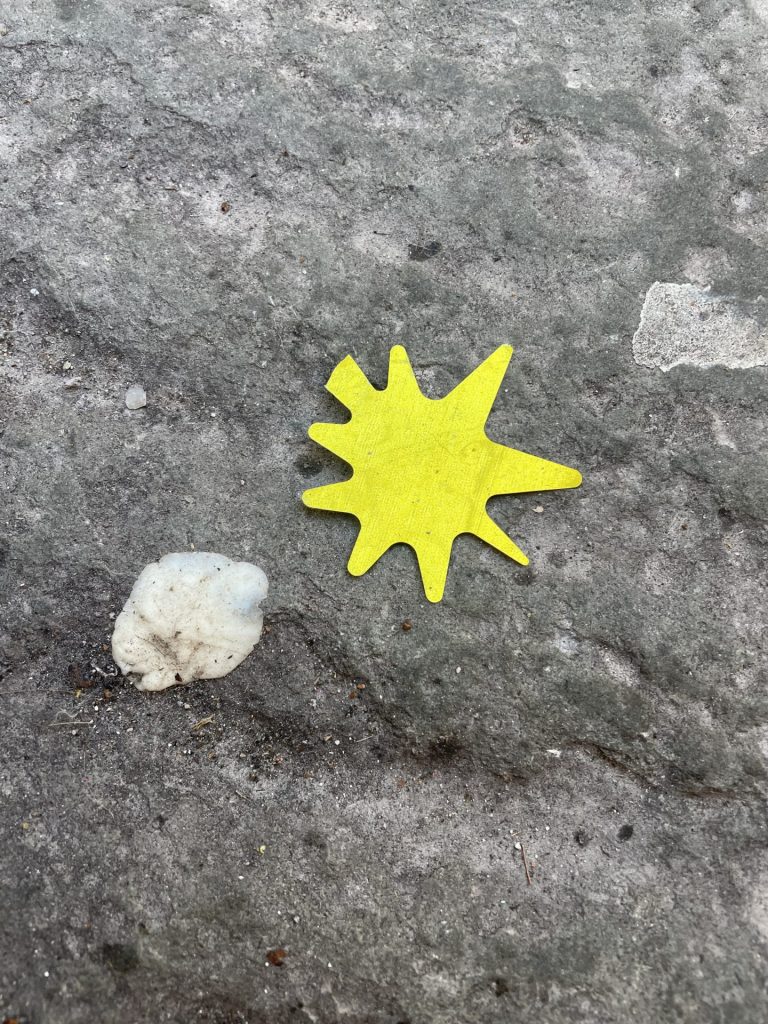
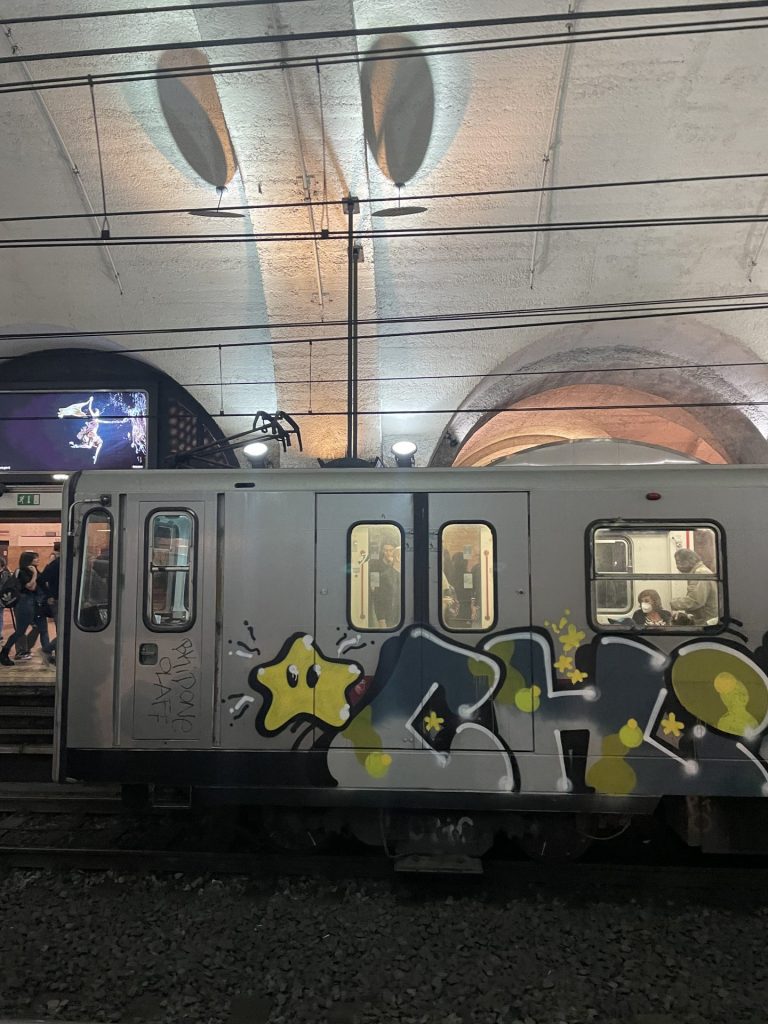
You’re halfway through your nine-month residency. How are you developing your research in Rome?
Time is the most useful and generous resource to me, so I feel like my work as a whole and the paintings on an individual level are at a much more engaging and fleshed-out position at this halfway point. I tend to answer my own questions that I have about my work just by painting all the time and seeing what sticks, and why, but this method requires an abundance of time and patience. I bring references from my surrounding world into the painting process, and they help me to dissect and dimensionalize disparate formal relationships. In Rome I’m looking at and documenting random moments of my surroundings, and understanding the city as my home for the time being. In my studio you’d see pictures taped to the wall of graffiti on metropolitan surfaces, guitar shops collections, buildings that look like faces, posters, billboards, street spillages, sunsets through a train car, or anything I once came across and found humorous or striking. The images themselves are not as fundamental to the work as much as the way that I perceive these spaces on a formal and intuitive level. This all being said, I don’t consider myself a research-based artist as much as I am driven by feelings rendered by the process. However, curiosity extends to both research and process, so maybe I can be both kinds of artist.
Five months into my stay at the BSR, my primary concern is still the larger scale oil paintings, but I’m also keeping up with my drawing and writing, which includes the Little Yellow Guy story. I still have many questions as to how to resolve each practice while I’m here, but I know now that it helps to think of them as individual projects which inform one another. As well as documenting odd Roman street occurrences, I am also looking at art, specifically painting, all the time. I think going on walks every day and trying to deeply understand my surroundings in relation to myself is going to help push my practice into the final stretch of my residency.



